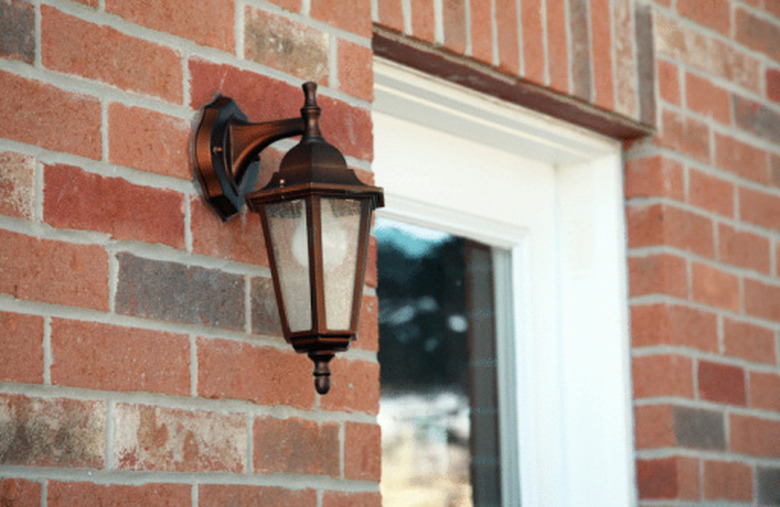There Are Tiny Bugs On The Lights On My Porch
When temperatures outside stay above freezing at night, seasonal insect activity begins. Drawn to any source of light, nocturnal insects gather around porch lights and security lights near building entryways as well as flying against windows towards the light inside the home. The smallest bugs could be a harmless inconvenience or an unpleasant and painful bother, depending on their species.
Light's Attraction
Insects flying at night instinctively chart a course set at an angle to a distant light source such as a star on the horizon. When insects first developed this navigational technique, chances of running into a stationary light source on the ground were slight. Today, insects often choose a bright porch light as their guiding beacon. Keeping that navigational angle constant sends the bugs into a tightening spiral, effectively trapping them in the area.
Midges
Several times from early spring into summer, midges emerge from their pupal stages and fly from their larval homes in lakes, rivers and mud flats to form mating swarms. The adults measure about 1/8th inch long and live from three to five days. Each breeding period lasts several weeks, according to North Carolina State University. Adult nonbiting midges do not feed or bite and live only to reproduce. Mating midges follow light sources and gather in large numbers around exterior lights. Midges which invade homes cause unpleasant problems since the short-lived insects die in heaps if trapped inside the house. Swarms could be so large that drifts form a foot deep inside buildings, decaying with the smell of rotting fish.
Biting Gnats
Biting gnats or midges, also known as no-see-ums, travel shorter distances to feed and usually stay within 2 km of their home body of water. Houses farther from lakes, ponds and streams shouldn't be bothered by this troublesome insect. No-see-ums derived their common name from their ability to bite without being seen. Though small, their bites cause immediate pain and the lasting irritation could lead to painful sores. Biting-midge larvae might inhabit farm ponds or even damp manure piles. Over 4,000 different species exist, with 57 known in Florida alone, says C. Roxanne Rultledge-Connelly of the University of Florida
Prevention
Midges provide important ecological benefits. Breeding swarms become a major source of food for fish and other wildlife. Midge larvae scavenge rotting organic debris from lake and river bottoms, contributing to water quality. Rather than trying to exterminate this helpful insect, homeowners should turn off bright lights near doorways and draw curtains closed during midge season. These tiny bugs crawl through the mesh of many standard 16 gauge window screens. Replacing screens with a smaller 20 gauge mesh prevents entry. To insect-proof the home, seal openings around pipes and external trim and install draft barriers at the bottom of exterior doors. Using yellow bug lights in porch lamps reduces the number of bugs attracted to the bulbs.
References
- NPR: Why Are Moths Attracted to Flame?; Debbie Elliott; August 18, 2007
- "Environmental Focus"; Midges — Non-Biting Gnats; Barb Ogg; July 2008
- Ohio State University Extension: Midges and Crane Flies; William F. Lyon
- North Carolina State University: Biology and Control of Non-Biting Aquatic Midges; Charles Apperson, et al.; July 2006
- University of Florida: Featured Creatures — Biting Midges; C. Roxanne Rutledge-Connelly; May 2005
